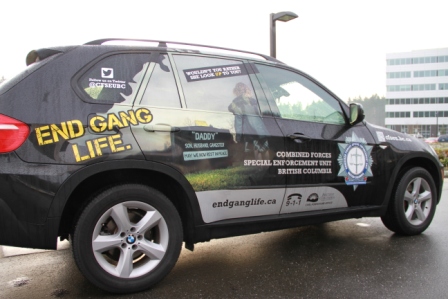Part 1: Interview
Host: Lindsey Relationship to me: Father
- What is your job title?
“Non-Commissioned officer in charge of the combined forces special enforcement unit of British Columbia’s community and public affairs section.”
- What is your job description?
“I am in charge of the province’s integrated anti-gang units media, public engagement, End Gang Life gang prevention and education initiative, as well as the gang intervention and exiting program.”
- What are the duties and/or tasks you perform at your job?
“I oversee and manage our strategic communications including writing media releases and giving media interviews. I also manage a budget of approximately 2.3 million dollars a year and supervise 23 people. I develop policies and create and manage a province-wide gang prevention and education content.”
- What qualifications do you need for this job In the following areas: a)Training?
“I needed different kinds of supervisor and leadership training. I had to take special finance and budget courses. And, I have to be a police officer which requires special training.”
b) Education?
“In order to be hired as a police officer in 1998, I needed to have a university degree and then I had to pass the police training at the Justice Institute of British Columbia.”
c) Experience?
“You need to be a police officer for a minimum of approximately 17 years.”
d) Skills and attributes?
“You have to be patient, calm under pressure, have good decision making, in order to be a police officer you have to be fit, very strong morals and ethics regarding what’s right and what’s wrong, and be able to trust your coworkers and their decision making”
- What are some things you like about this job?
“I get to help people, I’ve saved people’s lives, I like the people I work with, and my career has provided me a good life for my family.”
- What are some things you dislike about this job?
“My job has a lot of bureaucracy and paperwork, it has been hard on me physically, and can be very stressful.”
- How do you think this job might change in the next 5-10 years?
“I think there will be an increased use the use of technology like AI and I think in my job specifically, I think the way the media works in our society will be more reliant of social media instead of traditional media like newspapers.”
- Would you change anything about your job?
“Being a police officer has become very complicated, and it seems, at times, there is so much paperwork that it becomes overwhelming, and we sometimes feel like we forget why we became police officers in the first place.”
- How do you handle problems in the workplace?
“In my job, most of the problems in the workplace have to deal with staff and people. I deal with them using communication, talking to people, being empathetic, listening, and finding inclusive resolutions to their problems.”
Part 2: Reflection
Three reasons why I like this job are that it helps people, it makes an impact in the world, and it has the power to change lives and turn them around. Some reasons why I may not like this job are being surrounded by bad things, being at risk for acts of violence against you, and having to work in an office. I don’t think this job is for me because, although I do want to make a difference with what I do, I want to help in a different way. Technology is utilized in this job with digital media reports, statements in the news, and using computers for many tasks. The TOKW experience introduced me to some career paths available to me after I graduate high school. It taught me new things about many jobs and what the jobs would entail. I think TOKW was a very valuable experience to me, even if I don’t plan on getting a job here.










